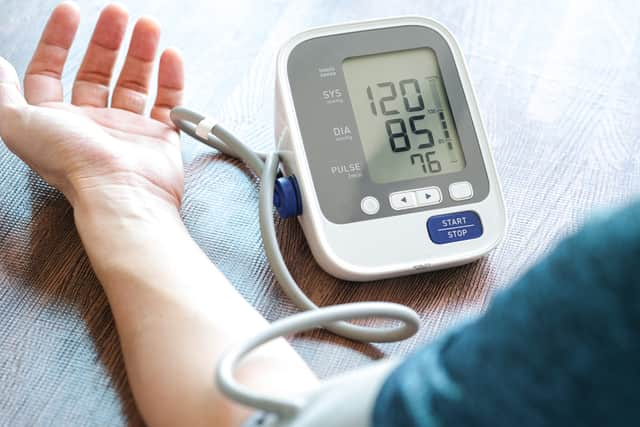Blood pressure: What does my reading mean? High, low and normal pressure levels explained
and live on Freeview channel 276
High blood pressure, or hypertension, is a health problem that affects millions of people across the world.
Regular monitoring of blood pressure readings is crucial for maintaining optimal health and preventing potential complications.


But what do these numbers really mean?
Advertisement
Hide AdAdvertisement
Hide AdBlood pressure readings are typically presented as two numbers: systolic and diastolic.
Systolic pressure is the higher number and measures the force of blood against artery walls when the heart beats.
Diastolic pressure, the lower number, indicates the pressure when the heart is resting between beats. The unit of measurement is millimetres of mercury (mmHg).
Here's what your blood pressure levels mean.
Normal Blood Pressure (120/80 mmHg)
This is considered the ideal range. A systolic reading of 120 and a diastolic reading of 80 mmHg reflect a healthy cardiovascular system. Individuals falling within this range are at a lower risk of heart disease, stroke, and other related complications.
Advertisement
Hide AdAdvertisement
Hide AdElevated Blood Pressure (120-129/less than 80 mmHg)
In this stage, the systolic reading ranges from 120 to 129 mmHg, while the diastolic reading remains below 80 mmHg. Though not classified as hypertension, elevated blood pressure should not be ignored. It serves as a warning sign that lifestyle modifications, such as dietary changes and increased physical activity, are necessary to prevent progression.
Hypertension Stage 1 (130-139/80-89 mmHg)
This stage indicates the onset of hypertension. Systolic pressure falls between 130 and 139 mmHg, and diastolic pressure ranges from 80 to 89 mmHg. Lifestyle changes are often recommended, and medical intervention may be considered based on individual risk factors.
Hypertension Stage 2 (140 or higher/90 or higher mmHg)
At this point, blood pressure reaches a concerning level. A systolic reading of 140 mmHg or higher, along with a diastolic reading of 90 mmHg or higher, necessitates immediate attention. Lifestyle modifications and medical treatment are generally prescribed to manage and reduce the risk of complications.
Hypertensive Crisis (Higher than 180/Higher than 120 mmHg)
This is a severe condition demanding urgent medical care. With a systolic reading exceeding 180 mmHg and a diastolic reading over 120 mmHg, there is an imminent risk of organ damage, stroke, or heart attack. Individuals experiencing these readings should seek medical attention immediately.
Advertisement
Hide AdAdvertisement
Hide AdBlood pressure readings are essential indicators of your cardiovascular health. Regular monitoring, especially for those with a history of hypertension or related conditions, can lead timely interventions and reduce the health risks.
Remember that individual factors like age, genetics, and underlying health conditions can influence blood pressure levels. Consulting a healthcare professional for personalised advice is the best way to understand how these numbers translate to your overall health.
Comment Guidelines
National World encourages reader discussion on our stories. User feedback, insights and back-and-forth exchanges add a rich layer of context to reporting. Please review our Community Guidelines before commenting.
